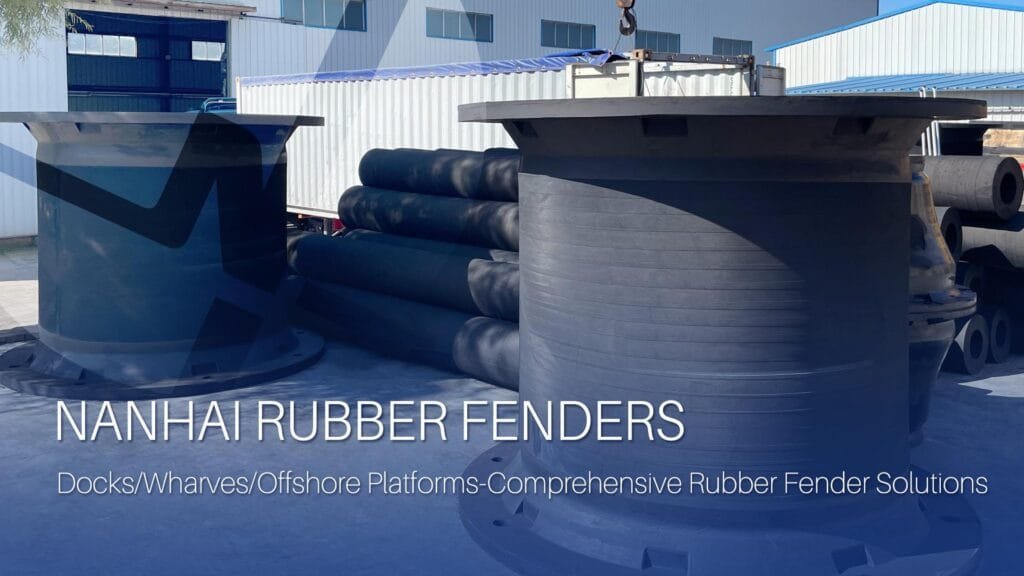Cell Fenders vs. Pneumatic Fenders: Which One Is Right for You?
07/01/2025Ship Launching Airbags Safety Tips
07/02/2025How to store rubber fenders?
Why You Must Act Now
Every marine crew has seen ship fenders lying in the sun. But rubber degrades quickly when exposed to heat, sunlight, and chemicals. At NANHAI, we once lost two pneumatic fenders that had cracked and hardened after poor storage. Clearly, proper care and storage aren’t optional—they’re critical.

Practical Tips for Storing Rubber Fenders
1. Clean and dry them fully
After each use, rinse the rubber fenders with fresh water or mild soap. This removes salt, grime, and other residues. Once clean, let them air dry completely. Moisture can lead to mold and early aging if ignored.
2. Store in a cool, shaded place
Direct sunlight causes rubber to harden and crack over time. Therefore, store your rubber fenders in an indoor space or under a shaded shelter where temperatures remain under 25 °C (77 °F). This will slow down UV damage and preserve their elasticity.
3. Inflate pneumatic fenders before storage
To keep their shape and avoid fold damage, fill pneumatic fenders to about 20–25 kPa. This small step prevents deep creases and surface wear during long storage periods.
4. Use proper support—avoid pressure spots
Instead of laying fenders directly on the ground, place them on padded wood or rubber blocks. Doing so avoids sharp pressure points that might deform or cut the rubber surface. In addition, avoid contact with chains, metal, or any hard edges.
5. Keep away from chemicals and fuel
Rubber reacts badly with oils, acids, and solvents. As a result, fenders should be stored at least 1 meter away from chemicals to prevent corrosion or swelling.
6. Inspect regularly and rotate when needed
It’s smart to check fenders every 3–6 months. Look for air leaks, surface cracks, or signs of flattening. Meanwhile, rotate their position if possible to avoid uneven wear on one side.
Quick Reference Snippets
- Always clean and dry fenders after use to avoid mold and decay.
- Store in a cool, dry area—away from sunlight and heat.
- Inflate pneumatic rubber fenders slightly to preserve their shape.
- Avoid metal or sharp contact points during storage.
- Check every few months for cracks or deflation.
Why This Matters for You
By following these simple storage steps, you protect your investment and ensure your marine fenders work when you need them. In addition, you reduce safety risks during docking and extend the fenders’ working life. If you operate a port or manage a fleet, smart storage is just as important as proper installation.
FAQ
Can I store rubber fenders outside?
No, it’s not recommended. Outdoor exposure to sunlight, moisture, and heat can damage the rubber quickly.
Should I deflate my pneumatic fenders for storage?
No. You should slightly inflate them to maintain their shape and avoid folding damage.
What temperature is best for storing fenders?
Keep them in environments below 25 °C (77 °F) for best results. Extreme heat or cold will age the rubber faster.
How often should I check stored fenders?
Every 3–6 months. Look for cracks, pressure loss, or hard spots, and rotate them to balance stress.
Is there a storage rack I can use?
Yes! Consider rubber-padded shelves, fender cradles, or wall hooks—just make sure they support the fender evenly.
Why Choose NANHAI?
At NANHAI, we don’t just sell marine fenders—we help you protect them. Our storage and maintenance guidance is based on real-world experience and international standards. Whether you use pneumatic, cone, or arch fenders, we’ll help you get the longest life and best value from each one.
Want a customized storage solution? Need on-site inspection? Reach out to our team. We’re here to help.
